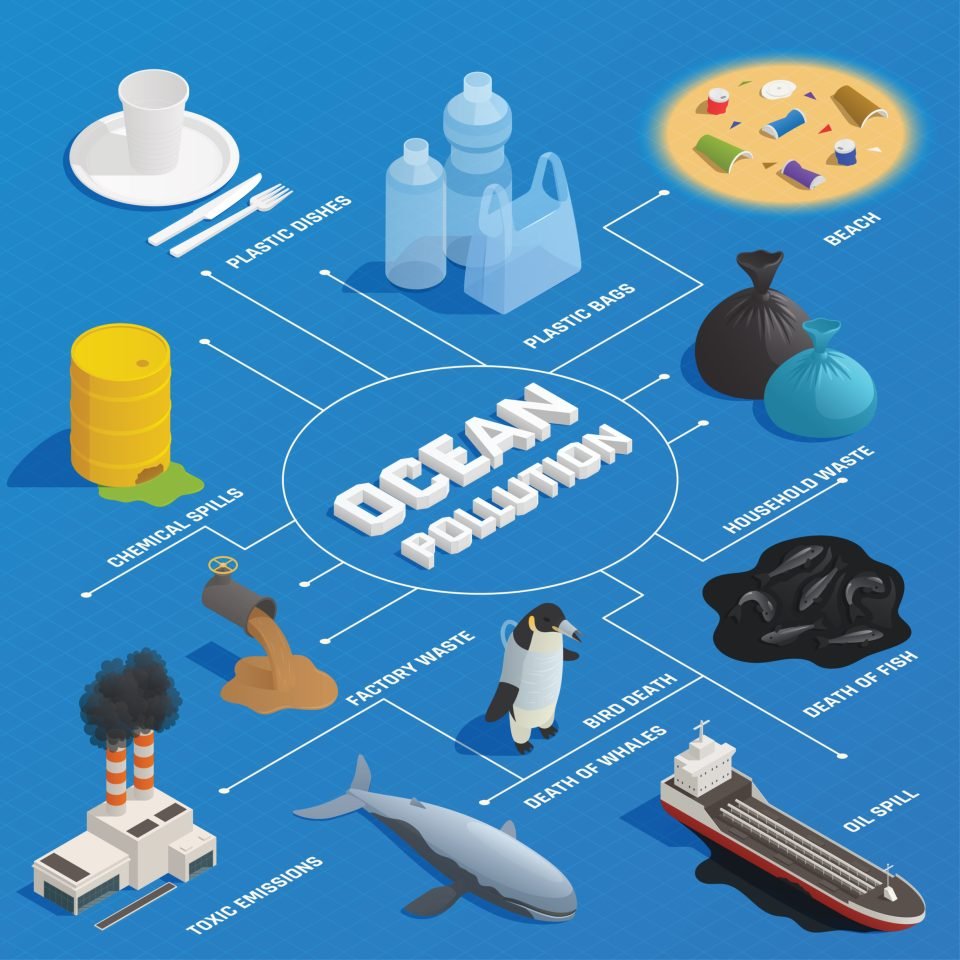Industrial and economic growth is a constant priority for every country in the world. However, it is saddening to observe the toll taken by lack of attention towards the nature that allows this growth. Marine pollution is one such area that pays a severe cost for lack of awareness and bad industrial practices. However, it is about time that the world collectively put its best efforts to sustain ecological conditions. It is as harmful to human lives as it is to aquatic lives. More than 1 million aquatic animals die every year, which is only due to plastic pollution. All aquatic lives including mammals, sharks, fish, birds, and turtles) face the consequence of waste management incompetence. The growth of IoT & smart cities has lit a light of hope that technology can significantly change the situation.
The Problem: Root Causes Of Rising Marine Pollution Levels
Identifying the causes of marine pollutants and their individual contribution is essential. The rising marine pollution level is beyond just the urban waste from beaches or sewage. Oceanic pollution levels are an accumulation of decades of irresponsible coastal development, chemical wastes, oil leakages, plastic debris, and overfishing. As an outcome, aquatic ecosystems now face climate change, loss of aquatic lives, nutrient pollution, and resource depletion. These root causes of marine pollutants are quite unique for technology to address them. However, with the growing engineering capabilities and common interest, technology can sustain the precious environment.
The Solution: IoT, Water Quality Monitoring & Cleansing Water Contamination
Identifying and mitigating the detrimental effects of pollutants is vital to protect the marine ecosystem. Lately, there have been significant efforts to monitor the underwater environment. The Internet of Things will play a considerable role in monitoring aquatic lives. As difficult as it is, data collected with the IoT implementations can change the environmental protection outlook. Data analytics can help derive the essential steps which could bring the change.
Monitoring aquatic life throughout the world is a vast challenge. As such, identifying marine pollution levels requires the monitoring of various aspects of aquatic ecosystems. Here are the several ways to implement IoT for marine health monitoring.
- Water quality monitoring:
Monitoring qualities of water such as turbidity, conductivity, pH, dissolved O2, and dissolved ions can provide the idea of present pollutants. Furthermore, Aerial and satellite remote sensing of water quality can create even more value in real-time. - Marine fish monitoring:
Fish monitoring includes a watch on water quality, uneaten feed, and fecal waste for a fish farm. Moreover, monitoring of fish activities & dead fishes can provide an idea of marine pollution levels. - Monitoring waves & currents:
Monitoring waves & currents are one of the preventive measures to ensure that any carrier doesn’t cause chemical or oil leakage because of bad weather. Measuring waves and currents can allow authorities to regulate pollution-free transportation. - Coral reef monitoring:
Monitoring Coral reefs are essential as they are at a threatening risk because of the pollution. Coral reefs now experience the highest aquatic temperature and acidity in the last 400,000 years. Therefore, their health is the representation of severe marine pollution levels.
A combined outlook of these aspects is the first step to begin. Data analytics will then process a large amount of data to derive conclusive actions into fighting the rise of marine pollution levels.
Final Conclusion
Unfortunately, marine water has been exposed to various sorts of pollutants through the years. The long list of common contaminants for marine water includes oil, plastic, chemicals, toxins, radioactive material, and sewage waste. The risk introduced by these marine pollutants is not limited to aquatic lives or contamination of water. Marine pollution levels impact natural balance and biodiversity. It harms global ecological health, safety, and even fiscal health with its cascading effects.
Therefore, it is safe to say that a lot of human existence depends on the marine ecosystem. Therefore, keeping a close watch on marine pollution level is a dire need of the time. Remote sensing, satellite communication, data analytics, and IoT can together help save the planet against the effects of marine pollution. Undeniably, it is the most formidable challenge to address, but surely with the current pace of technology, it seems feasible. The years-old treatment of aquatic ecology can finally take a monumental turn.
Discover other interesting topics here.
Develop great IoT solutions with high quality software, devices and infrastructures. Contact us!


